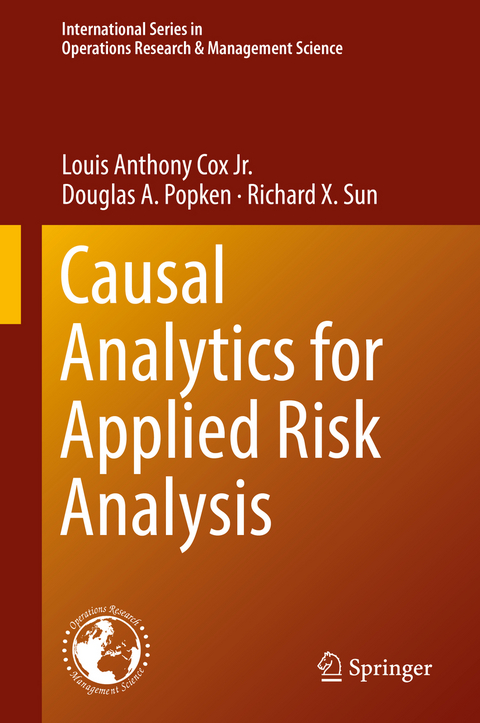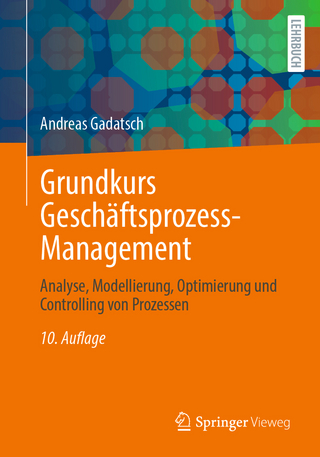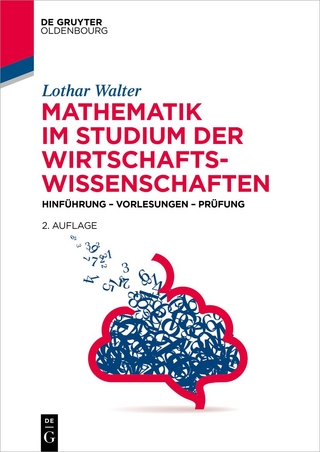
Causal Analytics for Applied Risk Analysis
Springer International Publishing (Verlag)
978-3-319-78240-9 (ISBN)
Drs. Tony Cox, Douglas Popken, and Richard Sun are experts in risk analysis, operations research, and computer science who have collaborated over the past three decades on diverse analytics applications and software products, including telecommunications network and operations optimization, health risk analysis, and machine learning innovations for making optimal use of costly information. Dr. Cox is also a member of the National Academy of Engineering and Editor-in-Chief of Risk Analysis: An International Journal.
Part 1. Concepts and Methods of Causal Analytics.- Chapter 1. Causal Analytics and Risk Analytics.- Chapter 2. Causal Concepts, Principles, and Algorithms.- Part 2. Descriptive Analytics in Public and Occupational Health.- Chapter 3. Descriptive Analytics for Public Health: Socioeconomic and Air Pollution Correlates of Adult Asthma, Heart Attack, and Stroke Risks.- Chapter 4. Descriptive Analytics for Occupational Health: Is Benzene Metabolism in Exposed Workers More Efficient at Very Low Concentrations?- Chapter 5. How Large are Human Health Risks Caused by Antibiotics Used in Food Animals?- Chapter 6. Quantitative Risk Assessment of Human Risks of Methicillin-Resistant Staphylococcus aureus (MRSA) Caused by Swine Operations Part 3. Predictive and Causal Analytics.- Chapter 7. Attributive Causal Modeling: Quantifying Human Health Risks Caused by Toxoplasmosis From Open System Production Of Swine.- Chapter 8. How Well Can High-Throughput Screening Test Results Predict Whether ChemicalsCause Cancer in Mice and Rats?- Chapter 9. Mechanistic Causality: Biological Mechanisms of Dose-Response Thresholds for Inflammation-Mediated Diseases Caused by Asbestos Fibers and Mineral Particles.- Part 4. Evaluation Analytics.- Chapter 10. Evaluation Analytics for Public Health: Has Reducing Air Pollution Reduced Mortality in the United States?- Chapter 11. Evaluation Analytics for Occupational health: How accurately and consistently do laboratories measure workplace concentrations of respirable crystalline silica?- Part 5. Risk Management: Insights from Prescriptive, Learning, and Collaborative Analytics.- Chapter 12. Improving individual, group and organizational decisions: Overcoming learning aversion in evaluating and managing uncertain risks.- Chapter 13. Improving organizational risk management: From Lame Excuses to Principled Practice.- Chapter 14. Improving institutions of risk management: Uncertain causality and judicial review of regulations.- Chapter 15. Intergenerational justice in protective and resilience investments with uncertain future preferences and resources.
| Erscheinungsdatum | 08.07.2018 |
|---|---|
| Reihe/Serie | International Series in Operations Research & Management Science |
| Zusatzinfo | XXII, 588 p. 121 illus., 95 illus. in color. |
| Verlagsort | Cham |
| Sprache | englisch |
| Maße | 155 x 235 mm |
| Gewicht | 1070 g |
| Themenwelt | Mathematik / Informatik ► Mathematik ► Finanz- / Wirtschaftsmathematik |
| Wirtschaft ► Allgemeines / Lexika | |
| Wirtschaft ► Betriebswirtschaft / Management ► Unternehmensführung / Management | |
| Schlagworte | Causal Analytics • Causal Models • Complex Industrial Systems • Decision Making • Descriptive Analytics • Evaluation Analytics • risk analysis • Risk analytics • Risk Management • risk models • Textbook |
| ISBN-10 | 3-319-78240-1 / 3319782401 |
| ISBN-13 | 978-3-319-78240-9 / 9783319782409 |
| Zustand | Neuware |
| Haben Sie eine Frage zum Produkt? |
aus dem Bereich


